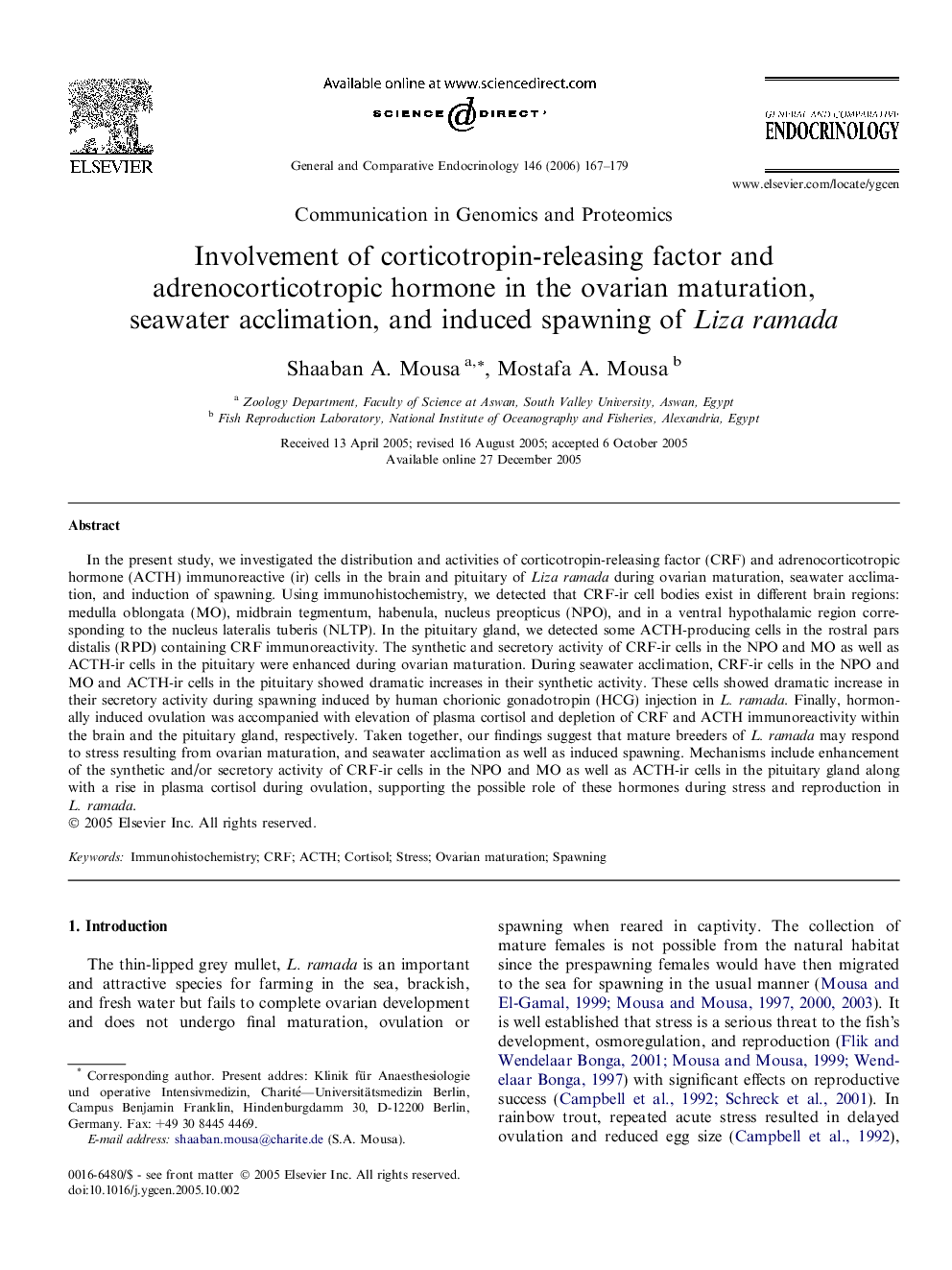| Article ID | Journal | Published Year | Pages | File Type |
|---|---|---|---|---|
| 2802456 | General and Comparative Endocrinology | 2006 | 13 Pages |
In the present study, we investigated the distribution and activities of corticotropin-releasing factor (CRF) and adrenocorticotropic hormone (ACTH) immunoreactive (ir) cells in the brain and pituitary of Liza ramada during ovarian maturation, seawater acclimation, and induction of spawning. Using immunohistochemistry, we detected that CRF-ir cell bodies exist in different brain regions: medulla oblongata (MO), midbrain tegmentum, habenula, nucleus preopticus (NPO), and in a ventral hypothalamic region corresponding to the nucleus lateralis tuberis (NLTP). In the pituitary gland, we detected some ACTH-producing cells in the rostral pars distalis (RPD) containing CRF immunoreactivity. The synthetic and secretory activity of CRF-ir cells in the NPO and MO as well as ACTH-ir cells in the pituitary were enhanced during ovarian maturation. During seawater acclimation, CRF-ir cells in the NPO and MO and ACTH-ir cells in the pituitary showed dramatic increases in their synthetic activity. These cells showed dramatic increase in their secretory activity during spawning induced by human chorionic gonadotropin (HCG) injection in L. ramada. Finally, hormonally induced ovulation was accompanied with elevation of plasma cortisol and depletion of CRF and ACTH immunoreactivity within the brain and the pituitary gland, respectively. Taken together, our findings suggest that mature breeders of L. ramada may respond to stress resulting from ovarian maturation, and seawater acclimation as well as induced spawning. Mechanisms include enhancement of the synthetic and/or secretory activity of CRF-ir cells in the NPO and MO as well as ACTH-ir cells in the pituitary gland along with a rise in plasma cortisol during ovulation, supporting the possible role of these hormones during stress and reproduction in L. ramada.
